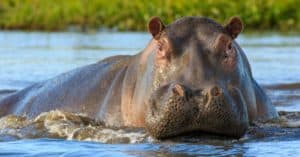Pablo Escobar, one of the most notorious and wealthiest criminals in history, left behind a very complicated legacy after his death. He was responsible for nearly 4,000 deaths and a reign of terror, and yet he also built homes and generously supported recreational pursuits for the poor. Known as the “King of Cocaine,” Escobar built an opulent mansion in Colombia filled with lavish hobbies. Escobar even constructed his own Jurassic Park-like zoo with several exotic animals, including four hippopotamuses from Africa. When Escobar was gunned down in 1993, his “Cocaine Hippos” were left behind to carry on a complicated legacy of their own.
Hacienda Nápoles: Home of the King of Cocaine and his Cocaine Hippos
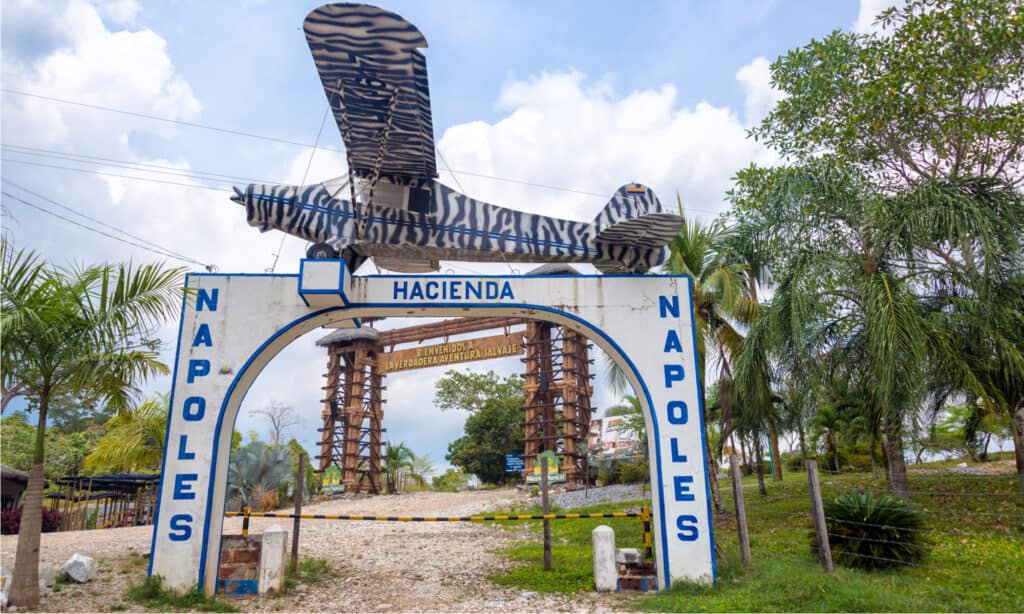
This Piper PA-18 Super Cub Airplane is identical to the one he used to fly his first shipment to the U.S.
©Jess Kraft/Shutterstock.com
Pablo Escobar built one of the world’s most lucrative criminal empires, collecting nearly $400 million a week in the 1980s. He was bringing in so much money that each month he allegedly spent $2,500 on rubber bands just to hold all his money together. Escobar was a billionaire with money to burn, so he built his own utopian mansion estate: Hacienda Nápoles.
Hacienda Nápoles is secluded in the natural landscape of Puerto Triunfo, Antioquia Department, about 90 miles east of Medellín. Escobar’s $63 million property was his own personal playground, covering 7.7 square miles of land. It included a Spanish colonial house, a private airport, vintage car collections, a large sculpture park, a kart-racing track, and even a bull-fighting ring.

The Amazon Rainforest is by far the biggest in the world.
©iStock.com/Petmal
One of the major highlights of Hacienda Nápoles, however, was Escobar’s own personal petting zoo, filled with illegally imported exotic animals. This included horses and ponies, antelope, giraffes, elephants, ostriches, camels, rhinos, exotic birds, and four hippopotamuses from Africa. Escobar kept the hippos in two different lagoons on the grounds of Hacienda Nápoles.
The “Cocaine Hippos”
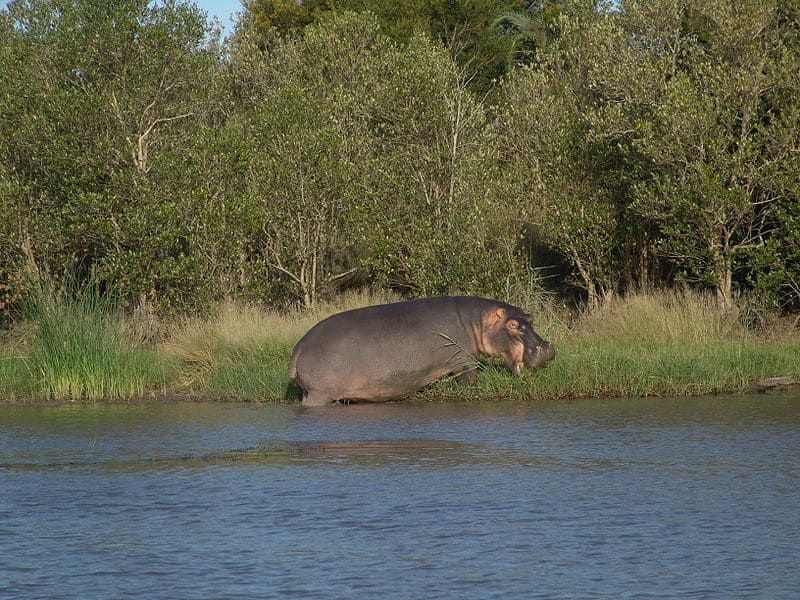
Escobar’s hippos explored beyond the estate. “Strange creatures” were reported in Puerto Olaya.
©Garibgazi – Public Domain
After Escobar’s death in 1993, most of the animals from Hacienda Nápoles were donated to various zoos and wildlife parks. The hippos, however, were difficult to capture and expensive to transport, so they were left to fend for themselves. It was assumed that these animals—far from their natural home in Africa—would eventually die out.
However, Escobar’s four hippos enjoyed the peace and quiet of their home at Hacienda Nápoles. They happily grazed across the ranch and lounged in the manmade lakes. The electric fence eventually went out, allowing the hippos to explore beyond Hacienda Nápoles. In the following years, they spread out and began settling in other lakes and rivers in the area.
How Hippos Adapted to Living in Colombia
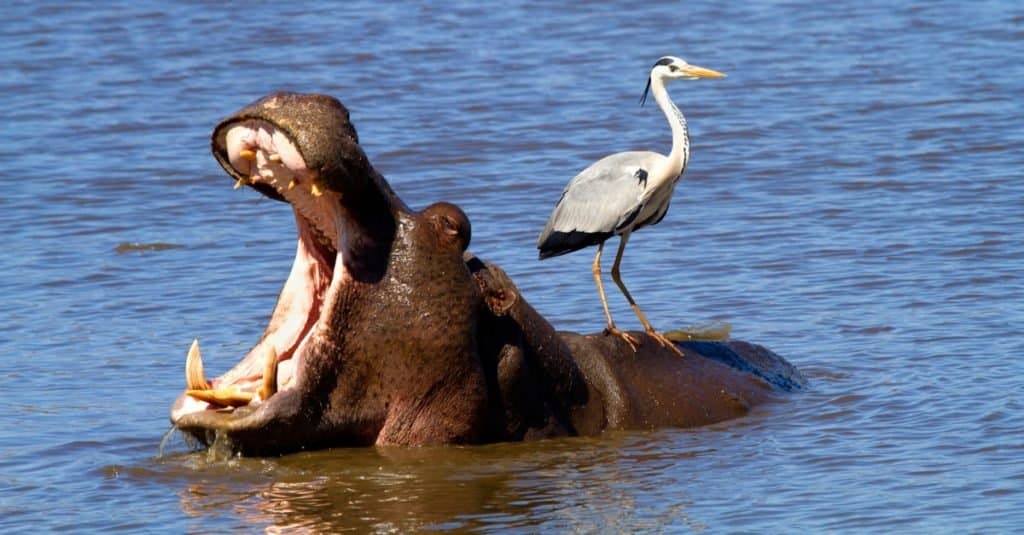
Hippos are graceful, good swimmers, and can hold their breath underwater for up to five minutes.
©Gaston Piccinetti/Shutterstock.com
Hippos are semiaquatic mammals that only live in sub-Saharan Africa, which is an ocean and 5,590 miles away from Colombia! However, the Colombian landscape proved to be an ideal habitat for hippos, full of lush vegetation and lacking any natural predators. Droughts and changing seasons help to keep hippo populations in check in Africa. The weather in Colombia, on the other hand, is perfect for hippos all year long, providing them with plenty to eat and enjoy.
Not only did Escobar’s hippos survive, but they also thrived in their own personal hippo paradise. Their reproductive rate illustrates just how ideal conditions in Colombia are for hippos. In Africa, hippos become sexually mature between seven and 11 years of age. The hippos in Colombia, on the other hand, appear to be starting as young as three years old, with fertile females giving birth to one calf every year or two. Since hippos can live up to 40 years in the wild, a single female hippo could potentially produce more than 30 calves during her lifetime. By 2020, the four original hippos at Hacienda Nápoles had multiplied to over 90 hippos living in and around the Magdalena River Basin.
The Problems with Hippos in Colombia
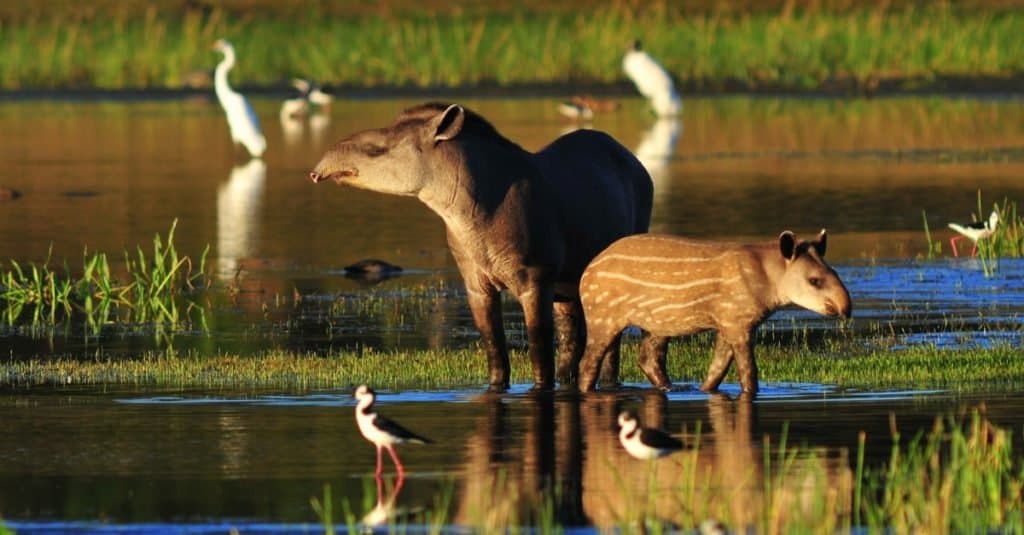
Hippos in Colombia could potentially force the country’s other native species, like tapirs, to relocate.
©Lucas Leuzinger/Shutterstock.com
Hippos spend much of the day resting. However, in a single night, they often travel across seven to eight miles of landscape as they explore and look for food. For the Cocaine Hippos, this means traveling outside of the borders of Hacienda Nápoles and closer to human settlements. Due to their large size and typically territorial nature, hippos often destroy and damage crops during these nightly outings. Furthermore, hippos are deadly, killing 500 people a year in Africa. While most hippos in Colombia leave the locals alone, they may become more territorial and have the potential to do a lot of harm.
Ecologists and biologists call hippos “ecosystem engineers.” Their nutrition and feces production changes whatever environment they inhabit by changing the vegetation and oxygen levels in the water. This puts native species like manatees, giant otters, and tapirs, at risk. If their current reproductive rate continues, scientists believe the hippos in Colombia could number 1,500 by the year 2035.
What to Do with the Growing Hippo Population
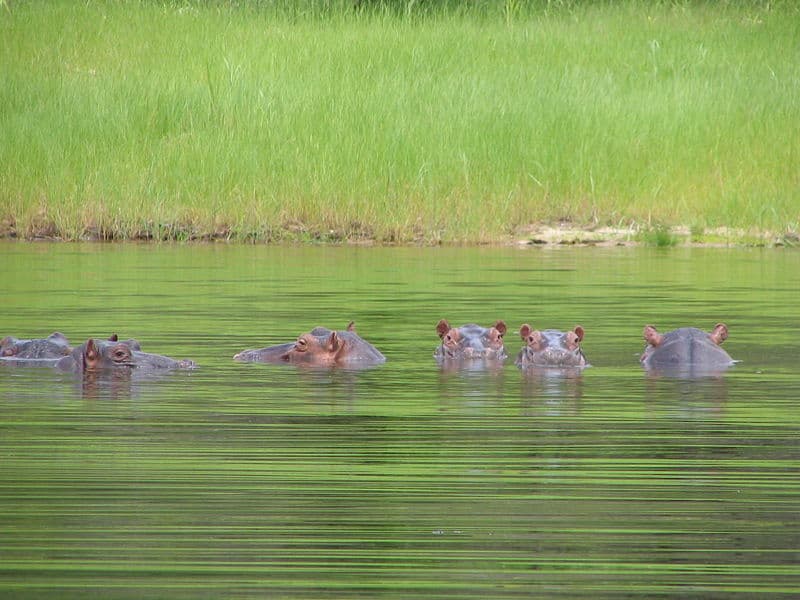
Hippos are semiaquatic and can transfer nutrients from land to the water through their movements.
Escobar’s hippos have now become a national problem for Colombia and its environment. On February 6, 2022, the hippo was officially declared an “exotic and invasive species in Colombia” by the Ministry of Environment and Sustainable Development (Resolution 0346 of 2022). As such, Colombia is rushing to find a solution to its hippo problem before it is beyond control.
The quickly growing hippo population presents many problems, with few solutions. The best option may be to capture the hippos and relocate them to zoos and animal sanctuaries. This would simultaneously protect the native ecology of Colombia as well as the hippos. However, there are not nearly enough facilities with the space or resources to take hippos in and care for them. Additionally, rounding up all the hippos for capture and transport would be dangerous and costly. Another option is to build a hippo reserve in Colombia with electric fences, but that carries long-standing costs and risks. Colombia unfortunately does not have the money or resources for such expensive ventures.
Culling the Hippo Population in Colombia

The alpha hippo, “El Viejo”, scared young males away, forcing them to settle outside the estate.
©Garibgazi – Public Domain
Another alternative is to cull the hippo population in Colombia to prevent future problems. However, this comes with its own difficulties. David Echeverri, a member of the local environmental authority, explains: “We do not want to choose the easy option and give the world this negative image, not with such a charismatic animal.”
In 2009, the Colombian government culled one of the male hippos. Reports stated that a rather aggressive male hippo— “Pepe”—and his mate were allegedly causing problems near the Magdalena River. The military intervened and shot Pepe, publicizing a “trophy picture” with soldiers posing next to the dead hippo. This enraged the Colombian public, and the government had to call off the hunt for Pepe’s mate and calf, Matilda and Hip. Eventually, they passed laws legally protecting the hippos.
El Colombiano reported that many locals are fond of the hippos in Colombia. Some locals call them “village pets,” while others even care for baby hippo calves. According to their reports, a young girl and her family cared for a hippo in their home. The girl named the hippo “Luna” (Moon) because it had such a sweet nature. Another young boy explained, “My father captured three. It is nice because you have a little animal at home. We bottle-feed them because they only drink milk.”
James Torres, a farmer who lives close to Hacienda Nápoles, occasionally fosters baby hippos from the Hacienda Nápoles. He explains that “They even follow you when you call them by their name.” Even though hippos are one of the world’s most dangerous animals, it is difficult to challenge the image of an adorable baby hippo.
Benefits of Having Hippos in Colombia

Hippos often spend nearly 16 hours a day in the water.
©cloudzilla / CC BY 2.0 – License
Although there are serious risks, many believe that hippos in Colombia could also be a good thing. Since hippos are a “vulnerable species,” seeing them flourish in Colombia could be seen as a success. In addition, some ecologists suggest that hippos could become an important keystone species for “rewilding” the ecosystem in Colombia.
The new hippo population has also been an economic boon for Colombian locals. Tourists come from all over the world to see hippos in the wild in Colombia. The Colombian government also renovated much of Hacienda Nápoles in 2015, transforming it into the Parque Temático Hacienda Nápoles, or the Hacienda Nápoles Theme Park. An estimated 50,000 tourists come to see the hippos and theme park each year. The local tourism fuels gas stations, hotels, restaurants, and other local business ventures in the area.
This family-friendly “Jurassic Park” styled theme park covers 3,953 acres, including a wildlife sanctuary with crocodiles, tigers, lions, zebras, elephants, and of course, hippopotamuses. While many hippos have settled outside of Hacienda Nápoles, a group of 30 or so remain on the grounds, including Vanessa, the park’s mascot. Vanessa is very popular with guests, and even responds to her name.
Additionally, many of the Colombian locals are now accustomed to living near hippos. Isabel Romero Jerez lives along the shores of the Rio Claro-South Cocorná, a tributary of the Magdalena River. She guides boat tours to see the hippos in the river and explains that the hippos are a very important part of the economy, resources, and biodiversity in Colombia. She asserts, “The hippopotamuses aren’t African now; they are Colombians.”
Sterilization Efforts
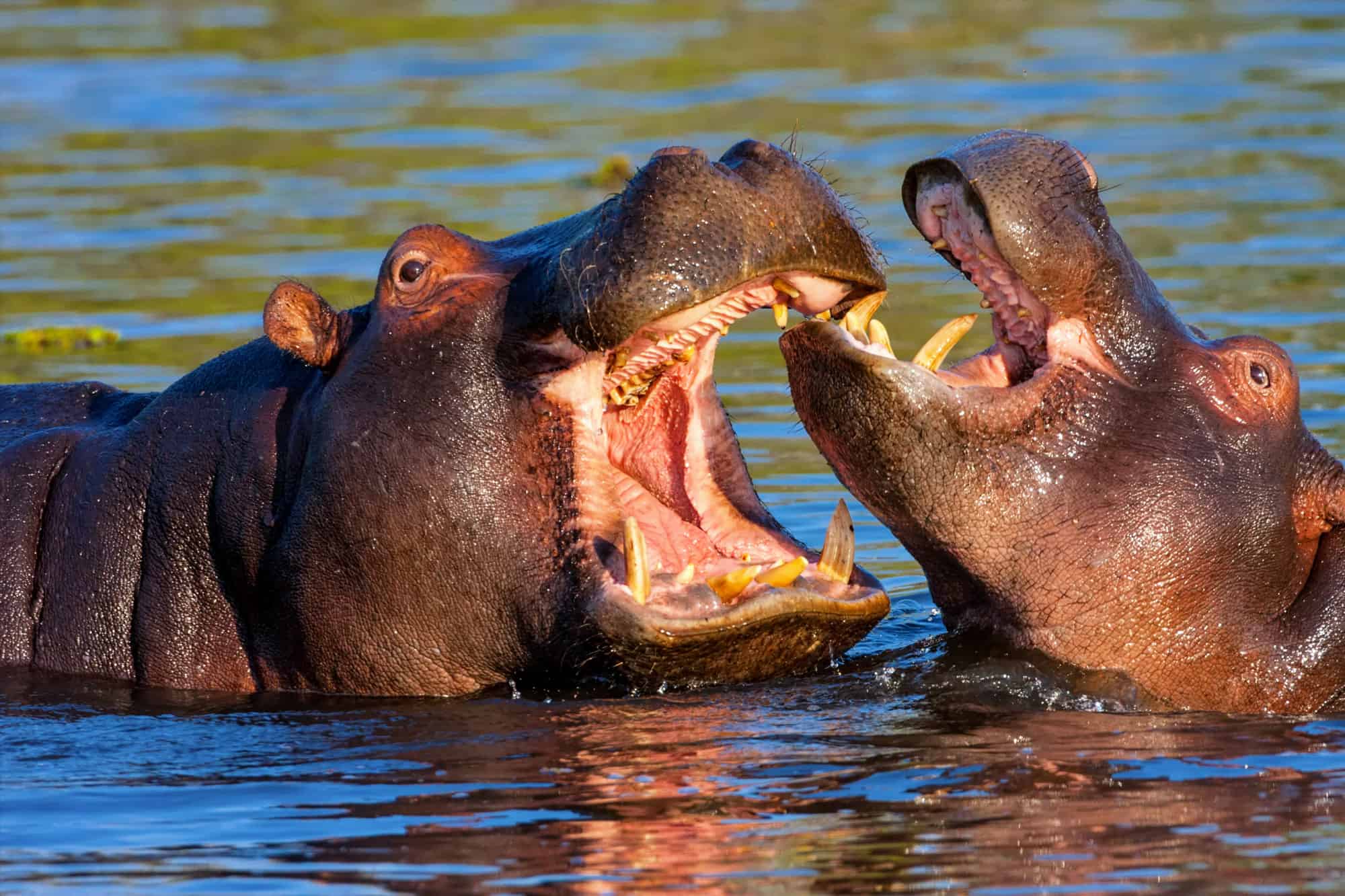
Hippos are highly aggressive and unpredictable, and often charge other animals or even humans.
©iStock.com/mesut zengin
Sterilizing the hippos would protect the animals and prevent an increasing population. However, this is very expensive, complicated, and dangerous for the veterinarians involved. There has not been a need to prevent hippo reproduction in Africa, so there is not a lot of information on the process or the reproductive anatomy of hippos.
Unlike many other mammals, the testicles of hippos are retractable and surprisingly difficult to locate. This makes it hard to tell a female from a male hippo and requires an ultrasound during surgery. In addition, these incredible animals weigh 1,500 pounds and have very thick skin. Hippos are also surprisingly sensitive to the chemical compounds used in sedation, so surgery can be dangerous to the hippo as well.
Veterinarians anesthetize hippos in the wild after luring them into a trap. Occasionally the crew may need to pull the hippo from the water as well (which is no easy task with such a large animal!). At least 30 specialists help to perform the surgery on location. This includes anesthesiologists, veterinarians, surgeons, biologists, instrument technicians, and assistants. The surgery takes around 10 hours, often in hot and humid tropical weather. If there are complications, the hippo travels to a sanctuary for recovery before returning to the wild. The journey to the sanctuary is dangerous, as the crew must travel several roads controlled by drug cartels.
As you can see, this is a complicated and expensive process. Capture, castration, and return for a single hippo can cost $50,000 or more. As of May 2022, 12 hippos in Colombia have been sterilized using this traditional method, helping to slow their population growth to some degree.
Putting Hippos on Birth Control
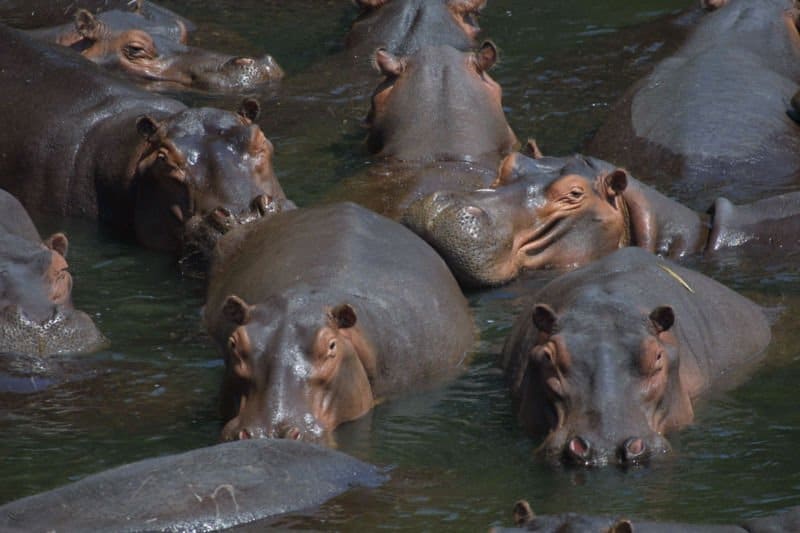
A hippopotamus can hold its breath underwater for up to five minutes.
©Paulmaz at the English language Wikipedia / Creative Commons – License
Researchers working with CORNARE have been studying Colombia’s hippos for the past 10 years. The group is also helping with traditional surgical sterilization methods. However, they also have embarked on an alternative approach for controlling the growing hippo population in Colombia. The new method is an experimental immunocastration pilot using the drug GonaCon—in other words, a birth control vaccine for hippos.
GonaCon is a vaccine that suppresses GnRH hormones to stop the production of both male and female reproductive hormones. GonaCon has been tested on kangaroos and wild cattle in Australia and Hong Kong. It is also registered for use on deer and wild horses in the United States. Administering the vaccine is complicated, however, and each hippo may need at least three doses of the drug. However, if it is successful, immunocastration would be a far cheaper and less invasive alternative to traditional sterilization.
Immunocastration is not necessarily the perfect solution, but it certainly will help to keep the hippo population in Colombia stable. This new experimental hippo program began with 24 hippos living in the Magdalena River Valley. CORNARE will continue to monitor the hippos to see how effective the immunocastration is.
The photo featured at the top of this post is © Martin Mecnarowski/Shutterstock.com
Thank you for reading! Have some feedback for us? Contact the AZ Animals editorial team.



